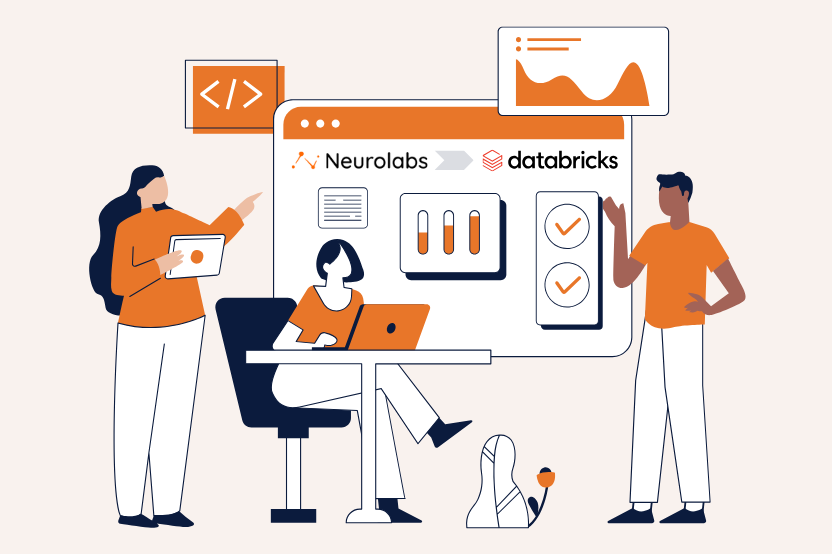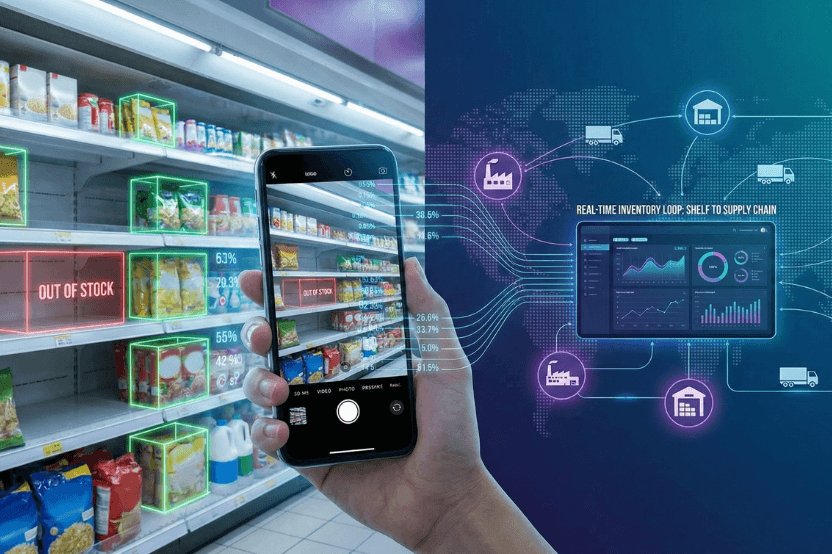Neurolabs, the computer vision company helping Consumer Packaged Goods (CPG) leaders turn shelf images into actionable retail insights, announces an integration with Databricks, the Data and AI company. This collaboration establishes Neurolabs' Visual AI as a native layer within the Databricks Data Intelligence Platform, enabling global CPGs to transform fragmented shelf images into governed, SKU-level data and unlock faster, more intelligent retail execution within a unified environment.
Turning Shelf Images into Structured, Governed Data
Retail execution data has long been fragmented, trapped in photos, field reports and siloed dashboards. Neurolabs changes that by transforming everyday shelf images into standardised, SKU-level data that is now accessible and governed natively within the Databricks environment through Unity Catalog and Delta Sharing.
This means CPGs can analyse share-of-shelf, price and promotion compliance, display execution and competitor data and more directly inside Databricks dashboards or through AI copilots powered by Mosaic AI, without needing custom integration or complex onboarding.
Why This Matters for CPG Leaders
- Succeed with AI: Apply Mosaic AI and predictive analytics to shelf and in-store data for next-best-action recommendations and automated retail insights.
- Democratise Insights: Teams across sales, trade and category management can ask natural-language questions about shelf availability, price compliance or competitor activity and get instant, AI-driven answers.
- Drive Down Costs: Unify image, sales and inventory data within Databricks to eliminate vendor silos, reduce manual audits and accelerate decision-making.
Insights are delivered through governed Databricks-native dashboards, meaning business teams can start acting in days, not months.
“Our mission is to make shelf data as easy to work with as sales data,” said Neurolabs CTO and Co-Founder Patric Fulop. “By bringing our visual AI directly into the Databricks Data Intelligence Platform, we’re giving CPGs a governed, real-time source of truth for retail execution.”
Real Business Impact
Early adopters have seen:
- Over 50% reduction in audit time
- More than 95% data accuracy across millions of SKUs
- Demonstrated sales uplift and cost reductions through faster, standardised execution analytics
By hosting Neurolabs data natively in the Databricks Data Intelligence Platform, global CPGs gain a complete view of retail execution, from product facings to performance outcomes, inside a single governed environment.
“Our vision is to become the global standard in image recognition for the CPG space,” said Paul Pop, CEO and Co-Founder of Neurolabs. “Integrating with the Databricks Data Intelligence Platform takes us a major step closer to that goal. Together, we’re helping CPGs move from fragmented, manual processes to a unified, AI-powered understanding of retail execution.”
Bridging the Technical Gap
This integration establishes Neurolabs as a Visual AI layer on top of the Databricks Data Intelligence Platform. Neurolabs’ proprietary product catalogue and image recognition results are mirrored as governed tables in Unity Catalog, providing CPGs with a secure, zero-copy method to blend visual data with other enterprise datasets. Furthermore, Delta Sharing allows customers to easily distribute these same datasets to retailers, brokers and agencies, enabling real-time collaboration across the entire retail ecosystem.
With Databricks SQL and Mosaic AI, teams can explore this shelf-level truth in real time, from executive dashboards to generative AI copilots, enabling enterprise manufacturers and retailers to see, understand and act on in-store realities faster than ever before.
How to Get Started
Getting started with Neurolabs inside the Databricks Data Intelligence Platform is simple:
- Connect to Neurolabs Data: Access a governed sample share directly in your Databricks workspace through Unity Catalog.
- Explore Prebuilt Dashboards: Import ready-to-use dashboards from UC Volumes to visualise shelf metrics like share-of-shelf, price compliance and promotion execution.
- Blend with Your Existing Data: Combine Neurolabs’ visual insights with your own sales and supply chain data to generate new analytics and AI-driven recommendations.
- Request a Demo: Our team can provision a sample Delta Share and walk you through setup in your own Databricks environment.
See It in Action
See your shelf data come to life inside Databricks. Request a demo today and discover how Neurolabs turns images into actionable, AI-ready insights.
_________________________
About Neurolabs
Neurolabs is a computer vision company that helps CPG brands and retailers transform shelf images into structured, SKU-level data. Its proprietary visual AI technology provides real-time insights into share-of-shelf, pricing, promotion, POS displays, competitors and more, empowering teams to make smarter retail decisions faster. Learn more at neurolabs.ai.




